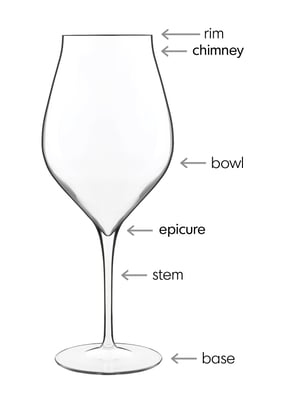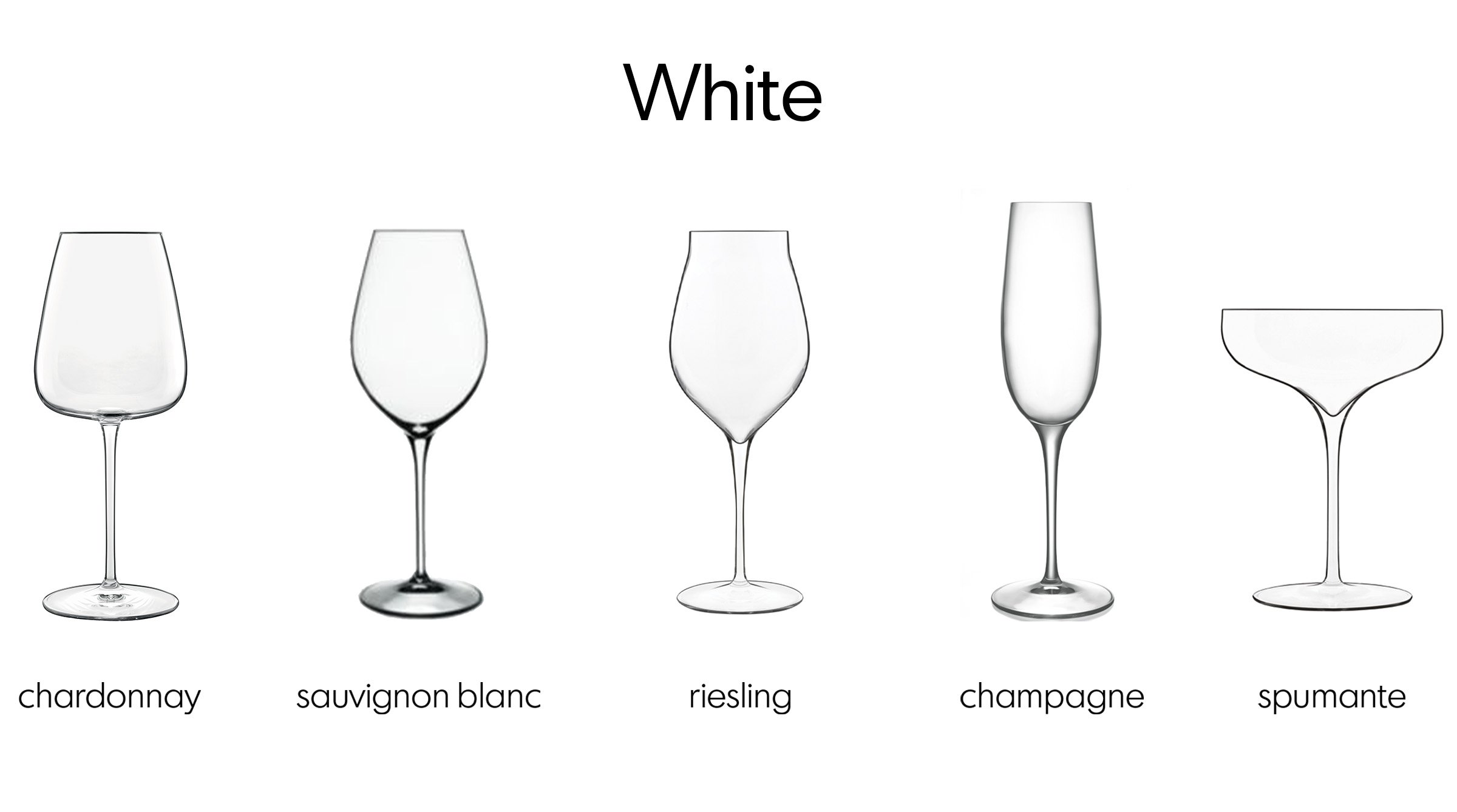From baked clay goblets to titanium reinforced crystal glass, the modern wine glass has come a long way. According to a study published in the 2017 British Medical Journal, wine glasses between 1700 and 2017 have gotten 7 times bigger. That contributes to the vast variety of glasses we have today.
 The shape, size, and material of the wine glass aren’t just for good looks. Each part of the wine glass plays a crucial role in your wine-drinking experience. Let’s take it from the top:
The shape, size, and material of the wine glass aren’t just for good looks. Each part of the wine glass plays a crucial role in your wine-drinking experience. Let’s take it from the top:
The Rim - This is the point where the wine makes contact with the drinker’s mouth. The thinner the glass, the easier and smoother the wine sips. Thinner glass also improves the mouthfeel of wine, while in thicker glasses there is a large rounded edge that disrupts the flow of wine to the mouth.
The Chimney - Some glasses have a tapered, narrow section just before the rim. The chimney helps separate alcohol vapors from the wine aromas (also known as bouquet), enhancing the flavor and reducing the wine acidity.
The Bowl - This is the most important part of the glass, where the wine settles. The bowl should be large enough so that the taster may properly swirl the wine. The shape and size of the bowl defines what type of wine should be served in the glass. The bowl also affects the taste and aroma of the wine.
The Epicure - Some glasses have an epicure, which is an indentation at the base of the bowl to show the true color of the wine to elevate your wine experience to the fullest.
The stem - Gives the glass height as well as provides something to hold. Stems are either pulled or joined, however, all Luigi Bormioli stems are pulled, creating one cohesive glass for stronger durability and resistance to breakage. The length of the stem may vary, the longer the stem the more the taster tilts their head back while drinking wine. This affects how much of the bouquet the taster may take in.
The base - Also known as the foot, is perfectly flat giving the glass stability. Exceptions may include stemless glass which features a prominent flat bowl as the base.

To get the most out of your wine experience, having the right glass is important. As some might say, the glass we drink the wine out of is almost as important as the wine itself.

Red Wine Glasses
While there are a plethora of varieties, the most common red wines are Cabernet Sauvignon, Pinot Noir, Merlot, Bordeaux, and Burgundy. These are generally full-bodied wines, requiring a larger bowl which allows the wine more surface area to oxidize, or “breathe.” Oxidation improves the overall flavor and releases the wine’s natural aromas which is essential to the taste of the wine. Researchers say 80% of flavors we taste is derived from smell! The wide mouth also helps reduce the taste and mouthfeel of tannins (bitter tasting compounds that leave a mouth-drying feel).

White Wine Glasses
Common white wines such as Sauvignon Blanc, Pinot Grigio, and Riesling are served in glasses with a narrower bowl. While red wines need a larger bowl to oxygenate, too much air in a white wine glass can affect the bright flavors of white wine. The narrower bowl as well as the smaller opening help keep the wine cool. The seamless stem is crafted so that your warm hands rest on the glass at just the right spot while still keeping the wine at proper temperature. The shorter glass helps focus the wine on the center of the tongue to highlight the crisp flavors.
White wines that are more full-bodied such as oaked Chardonnay, prefer a larger bowl which helps bring out more complex flavors.
Champagne/ Flute
Champagne and sparkling wines are all about the bubbles. They are best served in glasses that have a more narrow bowl and smaller mouth opening, to help maintain the bubbly effect. The shape of a champagne glass limits oxidation while also keeping the wine cool. Remember, the larger the bowl, the more room for oxidation. Some wine connoisseurs may prefer sparkling wines in white wine glasses, for more expressive flavors.
Spumante
The coupe glass was a popular style in the 1950’s and it’s making a comeback! This attractive vintage shape is short and wide, making bubbles in sparkling wine spread quickly. This enhances the aromatic complexity of sparkling wines, bringing out the floral, fruity, or spicy notes.

The Shape of the Glass is Important
The glass you use can define your wine experience, so choose glasses that will elevate your wine. Luigi Bormioli has been producing top quality glass since 1946, being the first glass manufacturer to replicate handmade glassware using a machine-blown process. All stemware are titanium reinforced, increasing resistance to breakage and chipping by 140%. Glass stems are flexible, making it easy to carry, serve and store multiple glasses. With ultra clear crystal glass, they can be run through the washer thousands of times while never losing their shine and sparkle.
Combining science, function, and fashion, Luigi Bormioli glasses are ideal for every setting and table. Take a look at the full range below:





